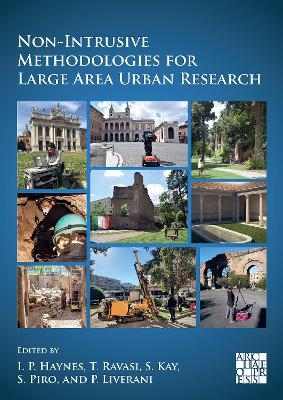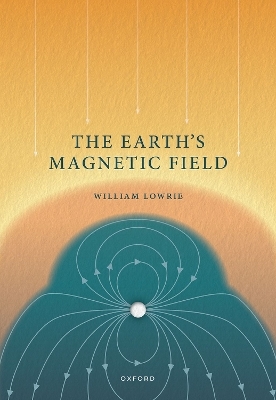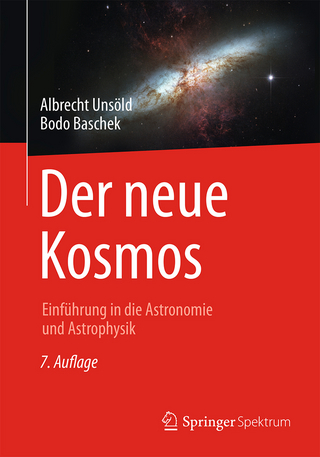
Non-Intrusive Methodologies for Large Area Urban Research
Archaeopress Archaeology (Verlag)
978-1-80327-446-1 (ISBN)
Non-Intrusive Methodologies for Large Area Urban Research brings together contributions from a conference held in 2021 in association with the ERC-funded ‘Rome Transformed’ research project. The papers address a major challenge in archaeology. Non-intrusive research in pursuit of a deeper understanding of urban areas can be both richly informative and cost-effective. Multiple successes in the field have led to an impressive array of innovative methodologies, methodologies that are frequently combined for still greater insight and impact. Geophysical surveys, the use of UAVs, the study of exposed historic structures and the exhaustive examination of archival records can all play a vital role, and the development of these data capture methodologies is of the utmost importance for the future of research. As well as advances in data capture methodologies, however, the papers also present case studies in the management of the big data generated and in the integration of different methodologies. A further strength of this collection lies in the range of site types considered. While many projects have historically pursued non-intrusive research in areas relatively clear of modern buildings, a growing number of research initiatives, such as ‘Rome Transformed’ are seeking to advance them in areas which remain densely occupied. Accordingly the material presented here will also be of interest to non-archaeologists working in such diverse fields as civil engineering, urban planning and physical geography.
Ian Haynes is Professor of Archaeology at Newcastle University, UK and Chair of Archaeology at the British School at Rome. He is Principal Investigator of the Rome Transformed Project. Ian has directed field projects in five countries and serves as Director of the Frontiers of the Roman Empire Digital Heritage Initiative. Thea Ravasi is Research Associate for the Rome Transformed project at Newcastle University, UK and a former museum curator in Italy. Since her PhD on the design of sculptural display at Hadrian’s Villa in Tivoli, her research and publications have focused on residential and monumental architecture in Rome, Pompeii, Herculaneum and on ancient Roman trade in Cisalpine Gaul. Stephen Kay is the Archaeology Manager at the British School at Rome, a Visiting Fellow at the University of Southampton and a Visiting Researcher at the Newcastle University. He has published widely on archaeological prospection with a principal focus on applications to Roman urbanism. He is a co-director of the Falerii Novi Project, a partner in the Rome Transformed project and has led excavations at Matrice (Molise), Segni (Lazio) and Pompeii (Campania). Salvatore Piro is Associated Senior Researcher and Head of the Geophysical Team at the Institute of Heritage’s Sciences ISPC of CNR. His research interests focus on the acquisition and processing of integrated geophysical methods for near surface investigations. Salvatore is member of SEG, EAGE, Near Surface Geophysics, EGU, EEGS and ISAP societies. He is Associate Editor of Near Surface Geophysics and of Archaeological Prospection Journals. Paolo Liverani is Professor of Topography of Ancient Italy and Head of the Department of History, Archaeology, Geography, Fine and Performing Arts at the University of Florence and a former Curator of Classical Antiquities at the Vatican Museums. Paolo’s research focuses on the topography of ancient Rome, Latium and Etruria, on Roman state art, on polychromy in Roman sculpture and on the history of Rome’s archaeological collections and museums.
Introduction – I. P. Haynes
RT3D stratigraphies: analysis and software design to manage data – V. Bologna, M. Azzari
Roman buildings on the western slopes of the Capitol. Investigations and new approach technologies – E. Bianchi, A. Pansini
Combining past, present, and future. Non-invasive mapping for the urban archaeology of Ascoli Piceno (Italy) – F. Boschi, E. Giorgi, M. Silani
SOS project: a new challenge for a novel approach to the understanding of an important historical city – S. Campana, S. Camporeale, J. Tabolli, R. Pansini, S. Güzel, G. Morelli, F. Pericci, M. Sordini, L. Gentili, F. Gianni, F. Vitali, G. Carpentiero, D. Barbagli
Conducting archival research in an interdisciplinary context for Rome Transformed – F. Carboni, E. D’Ignazio
The challenge for archaeologists using geophysics in urban areas – M. Dabas, F. Blary, G. Catanzariti
Methods and techniques for the interpretation and reconstruction of the ancient landscape outside the Aurelian Walls – E. Demetrescu, C. Gonzalez Esteban, S. Morretta, R. Rea
The archaeological area of S. Croce in Gerusalemme: new data for the reconstruction of the ancient landscape – A. De Santis, L. Bottiglieri, D. Colli, C. Rosa, M. Solvi
From interpretation to ‘provocation’ and back again: Rome Transformed SCIEDOC and the Ospedale di San Giovanni in Laterano – I. P. Haynes, T. Ravasi, I. Peverett, M. Grellert, M. Simpson
Rome Transformed: a multiple method geophysical approach for the urban investigations of the East Caelian – S. Kay, E. Pomar, G. Morelli
Three coloniae and three municipia: non-invasive exploration of urban contexts in Roman Hispania – L. Lagóstena, J. A. Ruiz Gil, J. Pérez Marrero, P. Trapero, J. Catalán, I. Rondán-Sevilla, M. Ruiz Barroso
The topography of Rome. An outlook for the future – P. Liverani
Ground-penetrating radar survey as the linchpin of a multidisciplinary approach to the study of two Roman cities in Lazio – A. Launaro, M. Millett, L. Verdonck, F. Vermeulen
A multidisciplinary approach for characterizing the shallow subsoil of the Central Archaeological Area of Rome for geohazard assessment – M. Moscatelli, M. Mancini, F. Stigliano, M. Simionato, C. Di Salvo, G.P. Cavinato, S. Piro
Acquisition, integration and interpretation of multiple GPR data sets in urban areas, as part of the ERC Rome Transformed project – S. Piro, D. Zamuner, T. Leti Messina, D. Verrecchia
Integrated GPR and laser scanning of Piazza Sant’Anastasia, Rome – E. Pomar, S. Kay, P. Campbell, K. Vuković
GPR survey in the Punic harbour of La Martela (El Puerto de Santa Maria, Spain) and the methodology used for the processing and archaeological visualisation of the data – J.A. Ruiz Gil, L. Lagóstena Barrios, J. Pérez Marrero, P. Trapero, J. Catalán, I. Rondán-Sevilla, M. Ruiz Barroso
4D with accuracy: why bother? – A. Schmidt, T. Sparrow, C. Gaffney, V. Gaffney, A. S. Wilson, R.A.E. Coningham
SITAR project. New approaches and methods for an open data archaeology of Rome – M. Serlorenzi, A. Cecchetti, A. D’Andrea, F. Lamonaca, G. Leoni, R. Montalbano, S. Picciola
Marvellous metadata: managing metadata for the Rome Transformed Project – A. Turner
| Erscheinungsdatum | 26.08.2023 |
|---|---|
| Verlagsort | Oxford |
| Sprache | englisch |
| Maße | 290 x 205 mm |
| Gewicht | 488 g |
| Themenwelt | Geisteswissenschaften ► Archäologie |
| Naturwissenschaften ► Geowissenschaften ► Geophysik | |
| ISBN-10 | 1-80327-446-8 / 1803274468 |
| ISBN-13 | 978-1-80327-446-1 / 9781803274461 |
| Zustand | Neuware |
| Informationen gemäß Produktsicherheitsverordnung (GPSR) | |
| Haben Sie eine Frage zum Produkt? |
aus dem Bereich


